List of Authors
>>About this blog
Recent blog post
|
[Sam]
December 18, 2015 14:00
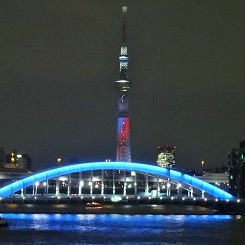 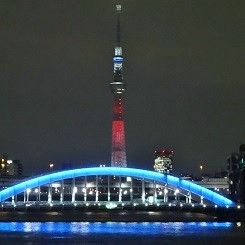
In commemoration of the release of the latest series "Star Wars / Awakening of Forces", which will be released all over the country at 18:00 on December 18, special lighting for Star Wars specifications is being implemented for a limited period of 4 days from December 17 to December 20.
The tower body is illuminated with the "red and blue production" inspired by the battle of light and darkness, and the "red production" that resembles a cross-shaped light saver operated by the new character of the movie "Cairo Ren". I am.
Lighting time: 18:00~23:00
From November 11th to December 25th, three types of Christmas special lighting (+2 types of normal lighting) are being available, but a separate program is available only for four days from December 17th to December 20th.
The "red production" is slightly different from the "Candle Tree", which is a Christmas specification of "White & Red" inspired by the flame of candles, and each is a unique pattern that was unveiled for the first time.
Both Eitai Bridge, which is lit up in pale blue, add color to the night sky.
[Sam]
December 16, 2015 20:00
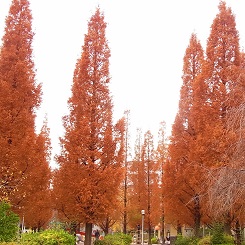 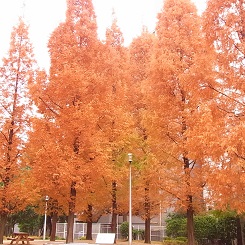
Metasequoia is deciduous Takagi of the genus Metasequoia of the genus Metasequoia.
The Japanese name is Akebono cedar.
The tree shape is upright, and the large one is said to reach a height of 35m and a diameter of 2-3m.
The canopy is conical, the bark is reddish brown, shallow and vertical.
The leaves are linear, paired in a feather shape, and turn orange-reddish brown in autumn.
Metasequoia at Akatsuki Park (Tsukiji 7) is also dyed orange and reddish brown, and it is at its best.
It was said to have flourished after the dinosaur era, and was initially discovered as a fossil, so it was treated as an extinction species.However, in 1945 (1945), it was confirmed to exist in Sichuan, China, and it suddenly gained the attention of the world. It is also called "living fossils". 1 genus.
It is said that Metasequoia was planted in Japan by Emperor Showa in 1949 (1949) at the Fukiage Palace.
It is a tree shape that creates an exotic atmosphere.
[Sam]
December 16, 2015 16:00
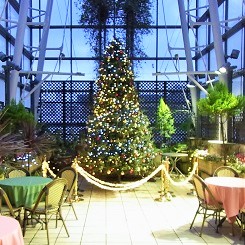 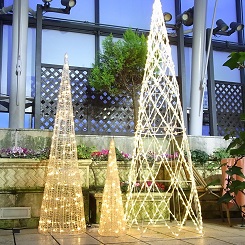
 At FANCL Ginza Square (Ginza 5), the salon space with terrace on the 10th floor "Royal Room" is open to the public as "Christmas Illumination Garden" for seven days from December 14th to 20th. At FANCL Ginza Square (Ginza 5), the salon space with terrace on the 10th floor "Royal Room" is open to the public as "Christmas Illumination Garden" for seven days from December 14th to 20th.
(16:00~19:00)
This is one of the "Seasonal Garden Events" currently held seven times a year, and is the last event of this year.
It is a production of a relaxing space while watching the illuminated terrace "Ginza's aerial garden".
During the period, 20-minute mini-lives are held daily from 16:20-/17:20-/18:20-3 times, and you can enjoy Christmas sounds with various sounds.
(14th: harmonica, 15th: accordion, 16th: guitar, 17th: saxophone, 18th: keyboard, 19th: 19th: Flute, 20th: Violin
On the 14th of the first day, the performance of the chromatic harmonica player Rei Yamashita.
You can also enjoy the Twilight Set (@ 1,000), a set of tidbits and sparkling wine made from organic materials specially selected by "9F Restaurant Ginza Mud Samurai".
[Sam]
December 10, 2015 16:00
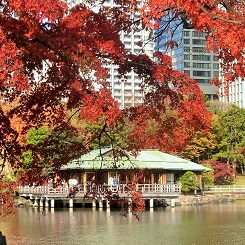 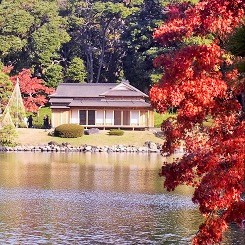
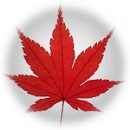 "Iroha maple autumn leaves" is one of the Japan Meteorological Agency's biological seasonal observation information. "Iroha maple autumn leaves" is one of the Japan Meteorological Agency's biological seasonal observation information.
On December 4, the Tokyo Regional Meteorological Observatory announced that "the autumn leaves of Iroha maple were observed in Tokyo."
7 days later than normal, 9 days later than last year, and the slowest observation since 1993.
The autumn leaves of Iroha maple are the first day when most of the leaves turn red when looking at the standard Kimata body, like ginkgo.
By the way, the Japan Meteorological Agency uses the maple maple on the premises of the Japan Meteorological Agency in Otemachi as a standard tree in Tokyo.
Even in the Hamarikyu Onshi Garden, the rosewood, maple, and Yaezakura around the tide pond (Oizumi) are dyed bright red and are at their best.
Iroha maple is a representative of the so-called "momiji" of the maple family maple.
Japanese maple. It is also called Takao maple because of Takao, a famous spot for autumn leaves in Kyoto.
Of the approximately 6,000 trees in the park, I heard that there are 25 maple trees.
Iroha maple is a small, small, palm-shaped, delicate leaf shape that splits 5-7 in a palm shape on finely divided branches, and yellow-green-green-yellow-red color to red, from budding to early summer and autumn leaves seasons. The vividness of the color is attractive.
With the Ochiyaya of Nakajima and Ochiya of Matsu in the background, Iroha maple, which shines in the soft sunlight, creates the atmosphere of a daimyo garden unique to this season.
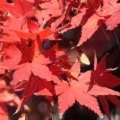  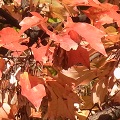 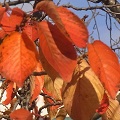
From the left, Iroha maple, Hasenoki, Toka maple, Yaezakura
[Sam]
December 8, 2015 09:00
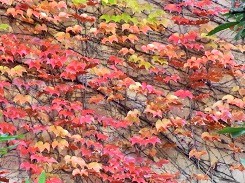 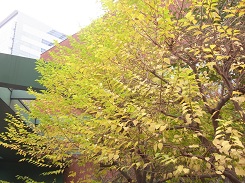
An annual mini-garden guided tour that takes a walk around the park with the guidance of a green adviser at the Pocket Plaza "Flowers, Water and Trees" in Harumi Triton Square.
This month was held on December 3rd. (12:30~ 14:30~)
There are autumn leaves that burn bright red, while vermilion, orange and yellow-green, and the colors of late autumn woven by Nishiki.
The yellow leaves of Benibana Japanese snowbell on the flower terrace are also impressive.
deciduous tree drops leaves all at once during the winter and enters dormant, but "winter buds" grow at the tip of the branch to prepare for the coming spring.
Among the plants with red fruits that come to the eyes of this season, Hiiragimochi (Chinese Holly) is an evergreen Odaka tree of the family Mochinoki.
It is also distributed as a Christmas holly, but the original Christmas holly is a nearby folly. The Japanese holly is evergreen and has a beautiful contrast with the spherical red fruit that ripens in late autumn, and has long been regarded as a sacred tree, and is a classic Christmas decoration.
In addition, the Japanese holly is a different species in the family Mokusei. The shape of the leaves is similar, but in fact it ripens black-purple.
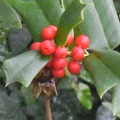 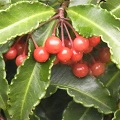 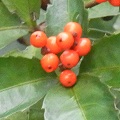 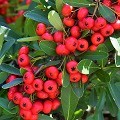
Hiiragi Mochi (Chinese Holly), Manryo, Senryo, Piracantha (Tokiwa Sanzashi)
Only when flowers and colors are scarce, the evergreen coniferous tree, which is not usually noticeable, is relatively noticeable.
Even though it is evergreen, some species are brownish in winter, and the color of green is slightly different.
There are various shapes.
If you observe carefully, you will be inspired by your unique shape.
The well-shaped "conifer" can be tailored to a Christmas tree.
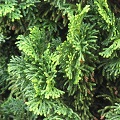 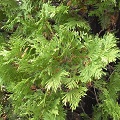 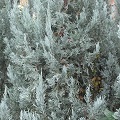 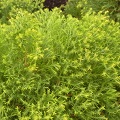
Hinoki "Nana Grassiris", Nioihiba "Yellow Ribbon", Colorado Villaxin "Blue Heven", Nioihiba "Rhein Gold".
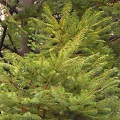 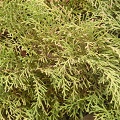 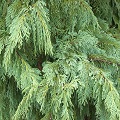 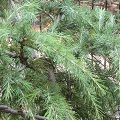
German spruce, hinoki "Microbiota dexata, Alaska cypress "Pendura", Himalaya Sheder "Golden Horizon"
This time, it was a plant walk that gained various awareness, such as how to view and see the garden from late autumn to early winter.
[Sam]
December 3, 2015 18:00
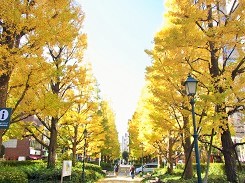 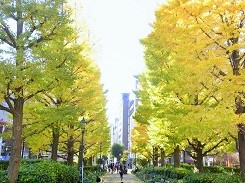
"Ginkgo Yellow Leaves" is one of the Japan Meteorological Agency's biological seasonal observation information.
On November 30, the Tokyo Regional Meteorological Observatory announced that "Ginkgo yellow leaves have been observed in Tokyo."
It's 10 days later than normal and 5 days later than last year.
The yellow leaf day of the ginkgo is the first day when most of the leaves turn yellow when looking at the standard Kimata body.
The lowest temperature in central Tokyo on the 30th is 6.5 ° C, and the lowest temperature has recently been below 10 ° C, suggesting that the color of ginkgo has progressed.
By the way, the Japan Meteorological Agency uses the "earthquake ginkgo" in the Otebori Ryokuchi (commonly known as Kiyomaro Park) at the northeastern end of the Imperial Palace, which has survived the fire caused by the Great Kanto Earthquake, as a standard ginkgo tree in Tokyo.
Ginkgo on the Green Road at Hamacho Park Entrance is also completely colored and is at its best.
Ginkgo (Ginkgo tree / duck tree / ginkgo tree) along with the young leaves, is even more beautiful when yellow leaves, is resistant to pests and pruning, can withstand fire heat, and is used as a street tree. .
It has a unique characteristic and forms a ginkgo family in one genus.
Ginkgo lined up on both sides emphasizes a sense of perspective, and the yellow leaves shine in the soft sunlight, just golden road.
It is a scene that represents late autumn.
|
Links
|






 At FANCL Ginza Square (Ginza 5), the salon space with terrace on the 10th floor "Royal Room" is open to the public as "Christmas Illumination Garden" for seven days from December 14th to 20th.
At FANCL Ginza Square (Ginza 5), the salon space with terrace on the 10th floor "Royal Room" is open to the public as "Christmas Illumination Garden" for seven days from December 14th to 20th.

 "Iroha maple autumn leaves" is one of the Japan Meteorological Agency's biological seasonal observation information.
"Iroha maple autumn leaves" is one of the Japan Meteorological Agency's biological seasonal observation information.



















